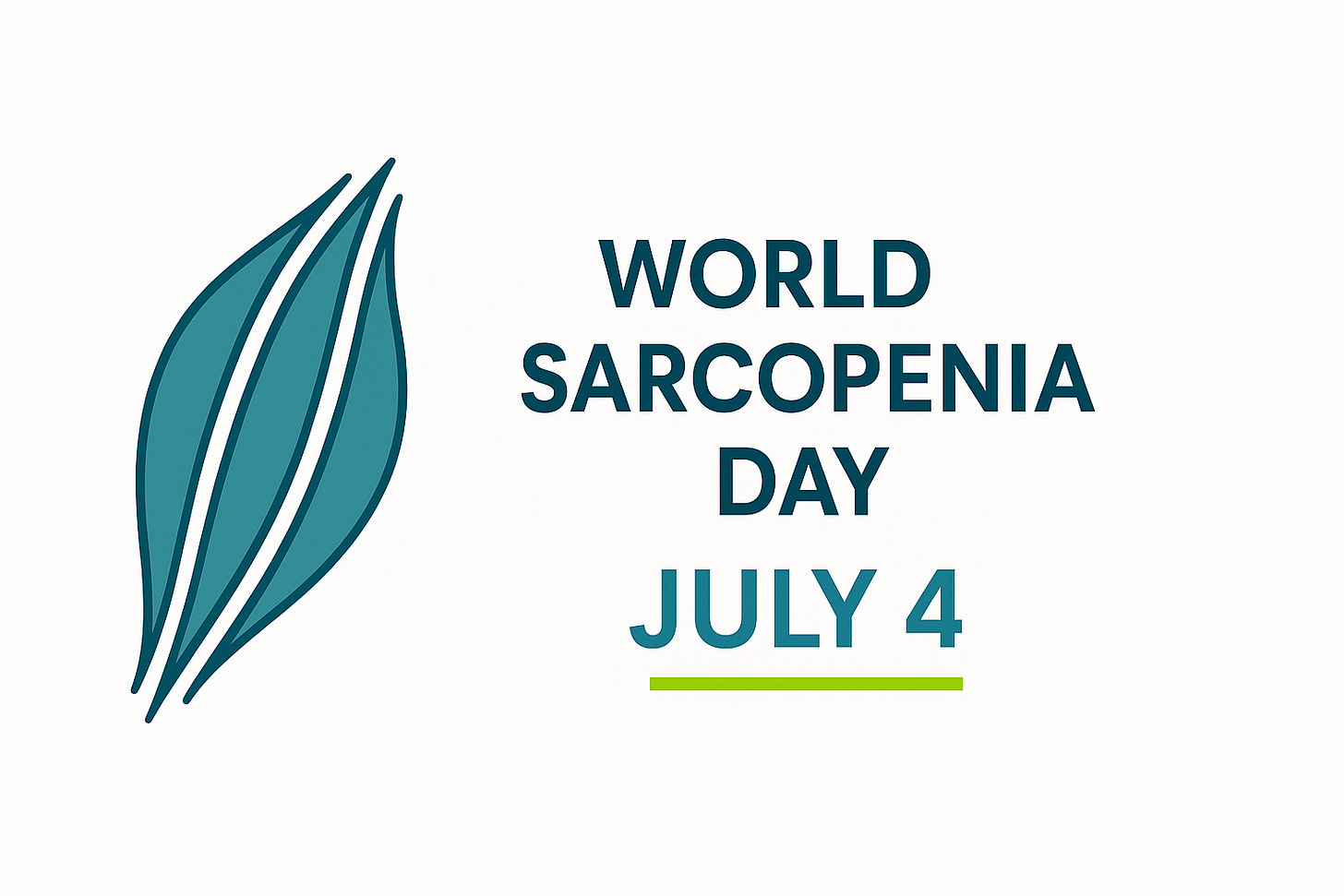Who’s at Risk for Sarcopenia?
Early muscle loss hides in plain sight. Learn if you’re vulnerable.
Fatigue isn’t normal. It could be sarcopenia
.
Marcia’s Experience
Sixty-six-year-old Marcia loved weekend hikes until her legs gave out on a gentle trail. Labs were normal, but her grip strength had silently slipped. Many adults don’t realize muscle loss starts long before their 80s and by then the risk of falls and loss of independence has already climbed.
What the Data Show
Ages 60–70: 5–13 percent have low muscle strength plus low mass¹
Ages ≥ 80: 11–50 percent meet sarcopenia criteria¹
Midlife window: 10–15 percent show early declines in grip strength²
Key Risk Factors
Age: Muscle mass declines about 3–8 percent per decade after age 30³
Physical Inactivity: Sitting more than 8 hours per day doubles sarcopenia odds⁴
Low Protein Intake: Eating under 0.8 g/kg/day raises risk by ~30 percent⁵
Chronic Disease: Diabetes, kidney disease, COPD worsen muscle breakdown³
Sarcopenic Obesity: Low muscle in overweight seniors carries higher mortality⁶
Medications: Long-term steroids and some chemotherapies accelerate muscle loss³
Early Detection Tools
Grip Strength: Under 27 kg for men or under 16 kg for women flags risk²
5-Chair-Stand Test: Taking over 15 seconds for five rises indicates low strength
SARC-F Questionnaire: A score of 4 or more predicts sarcopenia⁷
Combine age (≥ 60), risk factors, and one simple test to identify at-risk individuals before a fall or fracture.
Take Action Today
Problem We wait until muscle loss is obvious.
Agitation By then, fall and fracture risk may have doubled.⁴
Solution Screen early and address root drivers now:
Test your grip strength or complete the SARC-F.
Move: Begin simple resistance exercises (sit-to-stands, band rows) twice per week.
Nourish: Aim for 1.2 g/kg/day protein and ~25 kcal/kg/day energy
Tomorrow we’ll cover Why Sarcopenia Matters and how early losses impact healthspan and what the latest studies show. Subscribe to be sure you get this in your inbox.
Have you noticed muscle loss after 40? Before? Comment below.
References
Yeung SSY, Reijnierse EM, Pham VK, et al. Sarcopenia and its association with falls and fractures in older adults: a systematic review and meta-analysis. J Cachexia Sarcopenia Muscle. 2019;10(3):485–500. doi:10.1002/jcsm.12411. PMID:30993881; PMCID:PMC6596401.
Kirk B, Cawthon PM, Arai H, et al; GLIS Group. The conceptual definition of sarcopenia: Delphi consensus from the Global Leadership Initiative in Sarcopenia (GLIS). Age Ageing. 2024;53(3):afae052. doi:10.1093/ageing/afae052. PMID:38520141; PMCID:PMC10960072.
Mitchell WK, Williams J, Atherton P, Larvin M, Lund JN, Narici M. Sarcopenia, dynapenia, and the impact of advancing age on human skeletal muscle size and strength: a quantitative review. Front Physiol. 2012;3:260. doi:10.3389/fphys.2012.00260. PMID:22934016; PMCID:PMC3429036.
Landi F, Calvani R, Tosato M, et al. Sarcopenia as a risk factor for falls and fractures in older adults: a systematic review and meta-analysis. J Am Med Dir Assoc. 2012;13(1):74–79. doi:10.1016/j.jamda.2011.08.008. PMID:21854200.
Phillips SM, Chevalier S, Leidy HJ. Protein requirements and muscle mass/strength preservation in aging. Appl Physiol Nutr Metab. 2016;41(5):501–508. doi:10.1139/apnm-2015-0550. PMID:27142554.
Zhang X, Xie X, Dou Q, Liu C, Zhang W, Yang Y. Association of sarcopenic obesity with the risk of all-cause mortality among adults over a broad range of different settings: an updated meta-analysis. BMC Geriatr. 2019;19(1):183. doi:10.1186/s12877-019-1195-y. PMID:31353439; PMCID:PMC6657267.
Malmstrom T, Morley JE. SARC-F: a simple questionnaire to rapidly diagnose sarcopenia. J Am Med Dir Assoc. 2013;14(8):531–532. doi:10.1016/j.jamda.2013.05.018. PMID:23856151.






Definitely noticed muscle loss after menopause. Doing push-ups. If I don't consistently keep doing RT (machines & free weights) I find it harder. Analogy a bicycle tyre going flat & needs to be pumped up daily. Also I felt strong and it was easier, I would feel a pump.